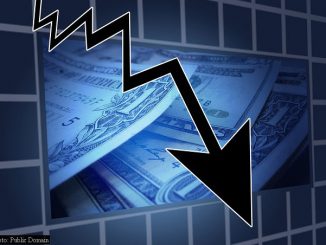When Gary Schilling presented to the Baltimore CFA Society, he made the comment about how much bonds beat stocks by. His proxy for bonds was 25-year zero coupon bonds. Invest in those from 1980 to the present, rolling to the new 25-year regularly, and yeah you can beat stocks handily when interest rates fall and continue to fall.
Think of what a 25-year zero coupon Treasury means. The price measures how much you are willing to discount inflation and nonexistence of the US government 25 years from now. When interest rates fall 3% for a 25-year zero, the value of the bond more than doubles. Falling almost 12% in yield since the peak, that multiplies the value of the bond more than 16 times, far more than the equity market over a similar period, including dividends.
But wait. How many people would have the stomach to make such a trade even if they were mostly convinced that rates would fall so much? Few, I think. The more volatile the investment, the fewer the people who follow through. People lose confidence during extended slumps. Schilling and Hoisington may have had the courage to do it, but few others did.
The same applies to a 100% equities portfolio. Few can stomach that level of volatility.
But when one compares bonds to stocks, be careful what you allow to be the bond proxy. Personally, I would choose the Lehman Barclays’ Aggregate — it’s a good proxy for the investment grade bond market, and there is nothing special about it — it has all risks, and an average level of interest rate sensitivity. It has done well over the last 30 years, but has not beaten stocks. Over the last ten years, yes, it has beaten stocks. But that is normal. Stocks have bad decades, every three decades or so. In those decades, bonds often do better.
If one uses 30-year Treasuries, rolling them over the last 30 years, you end up with an incredible result. Not quite as good as 25-year zeroes, but still good enough to beat the S&P 500 with dividends.
What I am arguing is that choosing the narrow area of the bond market that did best over the last 30 years — highest quality noncallable long debt, is not a fair comparison against the stock market as a whole. We should use the investment grade bond market as a whole, and that means the Barclays’ Aggregate [AGG].
Let me put it this way, if someone can pick the best performing index of bonds to compare against stocks, what is to keep the stock manager from picking the best sub-index of stocks to be the policy comparison? Hindsight is 20/20, so let’s limit the comparison to broad indexes.
- Bulenox: Get 45% to 91% OFF ... Use Discount Code: UNO
- Risk Our Money Not Yours | Get 50% to 90% OFF ... Use Discount Code: MMBVBKSM
Disclaimer: This page contains affiliate links. If you choose to make a purchase after clicking a link, we may receive a commission at no additional cost to you. Thank you for your support!




Leave a Reply